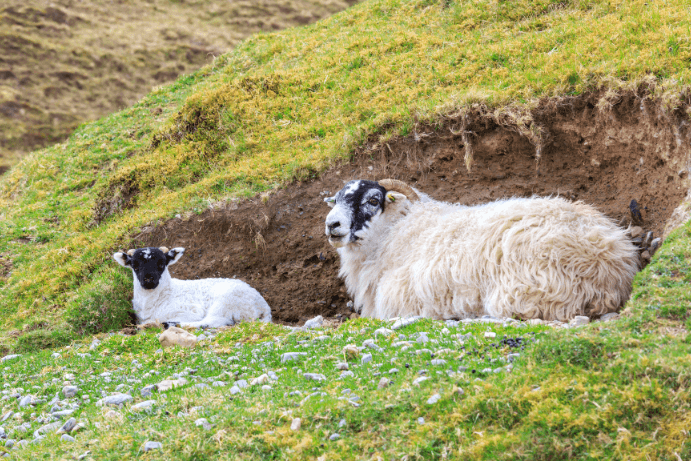Can you imagine sheep flocks changing human civilization? Yeah, these wooly animals indeed played a crucial role in shaping human civilization. A new study examining 118 ancient sheep genomes from bones spanning 11,000 years of history. It has revealed an interesting detail of migration, trade, and early human impact.
This study headed by geneticists from Trinity College Dublin reveals that sheep weren’t just passive farm animals. They took part in spreading cultures, languages, and economies. Let’s explore this intriguing story of prehistoric sheep and their strong link to human civilization.
The First Domesticated Sheep: A Game-Changer
The tale starts over 11,000 years ago in the northern Fertile Crescent, an area that includes present-day Turkey, Iraq, and Syria. Researchers think the first domestic sheep came from wild mouflon, a type of wild sheep found in this region.
Asikli Hoyuk (Aşıklı Höyük), one of the oldest known sheep-herding settlements in central Turkey. It offers genetic evidence that the sheep there were ancestors to later groups across the area. This indicates that early farmers caught wild sheep and bred them into the tame animals we see today.
But what tame sheep made to humans? These animals gave food (meat and milk) cozy wool, and leather. This helped early humans a lot, as they didn’t have to depend on hunting and gathering more. They could stay in one place and form communities instead.
Early Farmers Became Selective Breeders
By 8,000 years ago, evidence of deliberate selection by farmers of their flocks, on the gene coding for coat color. It has been found in the earliest European sheep populations.
As well as a matching signal in goats this is the oldest evidence of humans shaping the biology of another animal. And as with today’s farmers, they had an interest in the beautiful and the unusual in their animals. In particular, the main gene the team found evidence of selection near was one known as ‘KIT’ a gene. It is linked to white coat color in a range of livestock. By that time, the earliest domestic sheep genomes from Europe and the first from further east in Iran and Central Asia had also diverged from each other.
Dan Bradley, the leader of the research, and Professor of Population Genetics in the School of Genetics and Microbiology at Trinity said “This research shows how the relationship between humans and sheep has changed over time”.
Sheep and the Spread of Civilization
However, this division did not last as people brought sheep from the East to the West. First, in parallel with the diffusion of human culture from the early cities of Mesopotamia, we can see sheep genomes moving west within the Fertile Crescent about 7,000 years ago.
Second, the rise of pastoralist peoples in the steppes of Eurasia and their westward movement about 5,000 years ago greatly altered the genetic and cultural composition of European populations.
This process replaced the makeup of human populations, for example, replacing about 90% of the ancestry of Britishers, and introduced the ancestor of the Indo-European language that was the mother of all languages spoken throughout the continent.
The Bronze Age Boom: Sheep Take Over Europe
From the dataset used in this study, it now appears that this massive migration was driven by sheep herding and the use of products that could be kept for a lifetime, such as milk and probably cheese, as it is at the same time that sheep pedigrees are also changed.
Consequently, herds had about half their ancestry from a source in the Eurasian steppe by the Bronze Age.
The first author is Kevin Daly, Ad Astra Assistant Professor at UCD School of Agriculture and Food Science, and an Adjunct Assistant Professor in the School of Genetics and Microbiology at Trinity said: “Discovering a major prehistoric sheep migration from the Eurasian steppes into Europe during the Bronze Age was one of our most striking discoveries”.
A Furry Connection to Our Past
This is parallel to what is known about human migrations during the same period, which suggests that when people moved, they brought their flocks with them.
Thus, sheep have been of great importance to human culture and economy from the earliest domestication up to the development of wool as an important textile fiber.’

